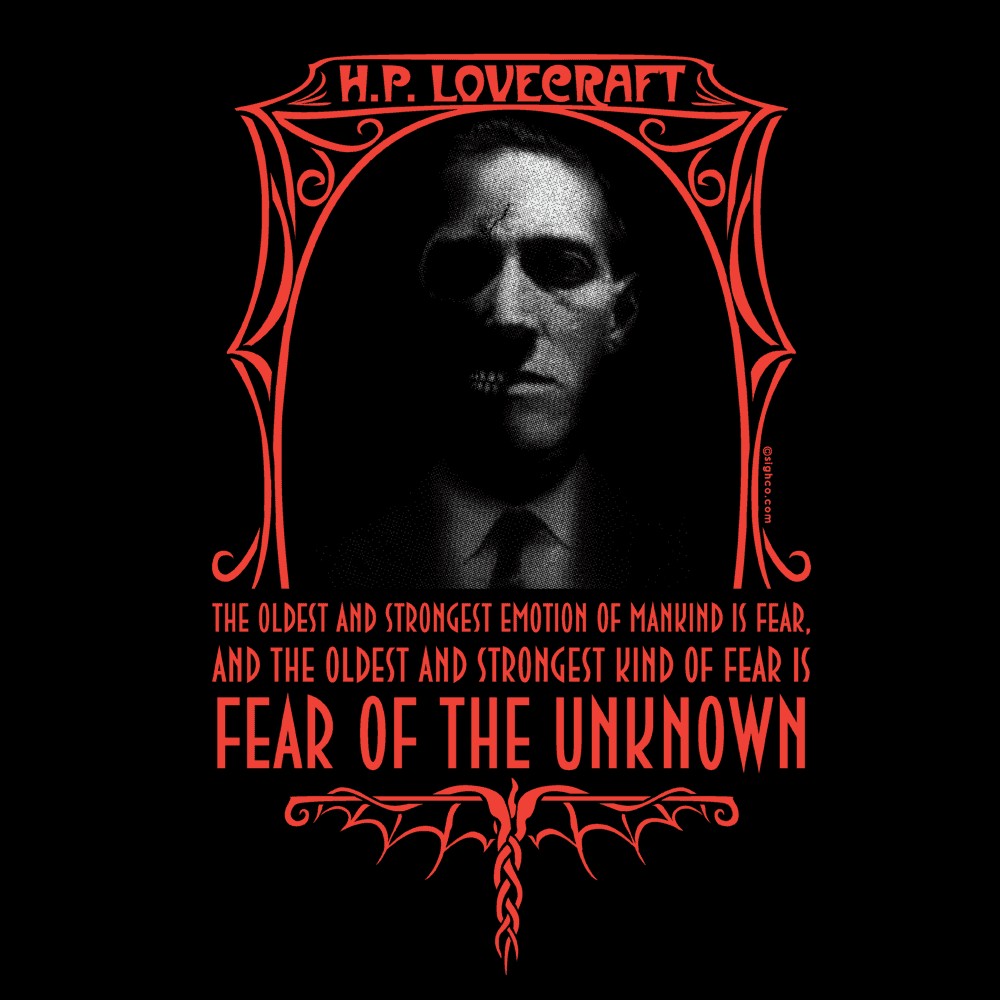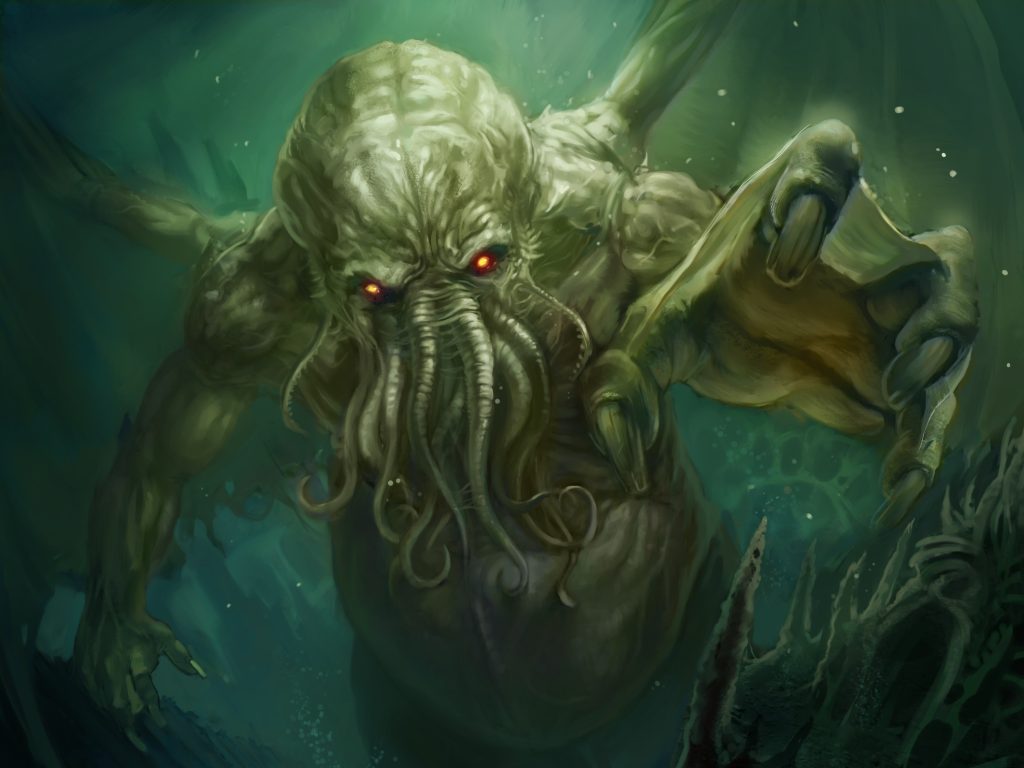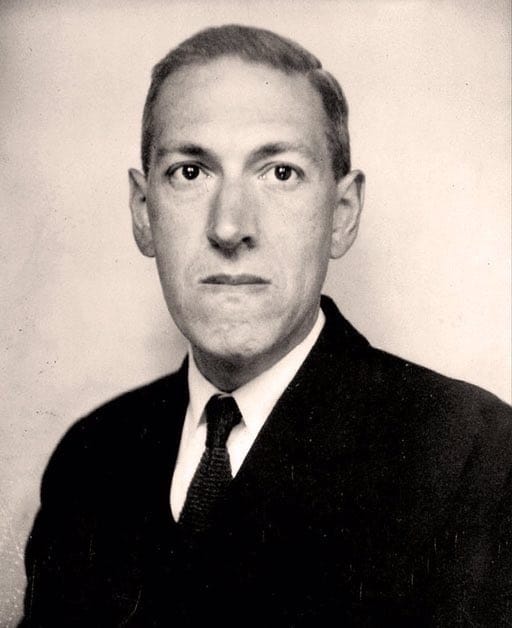
“The oldest and strongest emotion of mankind is fear, and the oldest and strongest kind of fear is fear of the unknown.”
— H.P Lovecraft
A Short Bio

Howard Phillips Lovecraft was born on August 20, 1890, in Providence, Rhode Island. Lovecraft’s early life was marked by tragedy and isolation, shaping his distinctive worldview and literary voice. His father, Winfield Scott Lovecraft, was committed to a mental institution when Lovecraft was only three, leaving his mother, Sarah Susan Phillips Lovecraft, to raise him. She herself suffered from psychological issues, further contributing to Lovecraft’s solitary and sheltered upbringing.
As a child, Lovecraft was a prodigy, reading and writing from a very young age. He developed a fascination with classical literature and mythology, devouring the works of Edgar Allan Poe, Lord Dunsany, and the Gothic tradition. Lovecraft’s grandfather, Whipple Van Buren Phillips, also played a significant role in his early education, introducing him to weird tales and ancient lore that would later influence his writing.
Lovecraft’s formative years were marred by bouts of illness and nervous conditions, which kept him out of formal schooling for extended periods. Despite this, he pursued a rigorous self-education, delving into astronomy, chemistry, and history. This intellectual curiosity, combined with his vivid imagination, laid the groundwork for his future as a writer of weird fiction.
Writing and publishing
Lovecraft began his writing career in earnest in the 1910s, initially focusing on poetry and essays. It wasn’t until the 1920s that he turned his attention to fiction, penning stories that would later become cornerstones of the horror genre. His first significant publication was “The Alchemist,” which appeared in United Amateur in 1916. However, it was his work for pulp magazines, particularly Weird Tales, that cemented his reputation as a master of horror.
Central to Lovecraft’s oeuvre is the creation of the Cthulhu Mythos, a complex mythological framework featuring ancient gods, cosmic horrors, and forbidden knowledge. This mythos is characterized by its themes of existential dread, the insignificance of humanity in the face of an indifferent universe, and the fragility of sanity.
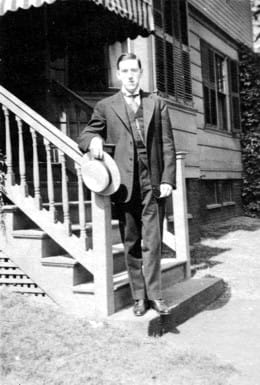
His personal life was fraught with difficulties. Despite his literary output, he struggled financially throughout his life. He was a recluse, often living in relative poverty, and moved frequently. In 1924, he married Sonia H. Greene, a successful businesswoman. However, the marriage was short-lived, primarily due to Lovecraft’s inability to support them financially and his unwillingness to leave Providence for extended periods.
Lovecraft’s life was also marked by his controversial views. He held deeply xenophobic and racist beliefs, which permeate some of his writings and letters. While these views were not uncommon for his time, they have led to significant criticism and re-evaluation of his legacy. Modern readers and scholars often grapple with separating the author’s abhorrent personal beliefs from his literary contributions.
Despite these challenges, Lovecraft continued to write prolifically, maintaining correspondence with a circle of contemporaries who admired and were influenced by his work. This group, often referred to as the “Lovecraft Circle,” included notable writers such as Robert E. Howard, Clark Ashton Smith, and August Derleth. These correspondences helped to expand the Cthulhu Mythos and ensure its continued evolution and popularity.
Lovecraft died of cancer on March 15, 1937, at the age of 46. At the time of his death, he was relatively unknown outside of pulp magazine readers. However, his influence grew significantly posthumously, thanks in large part to the efforts of his friends and admirers who preserved and promoted his work.
August Derleth and Donald Wandrei founded Arkham House in 1939, a publishing company dedicated to printing Lovecraft’s works. This endeavor brought Lovecraft’s stories to a wider audience, cementing his place in the pantheon of great American writers. Lovecraft’s influence extends far beyond literature, impacting a broad range of media, including film, television, video games, and tabletop role-playing games.
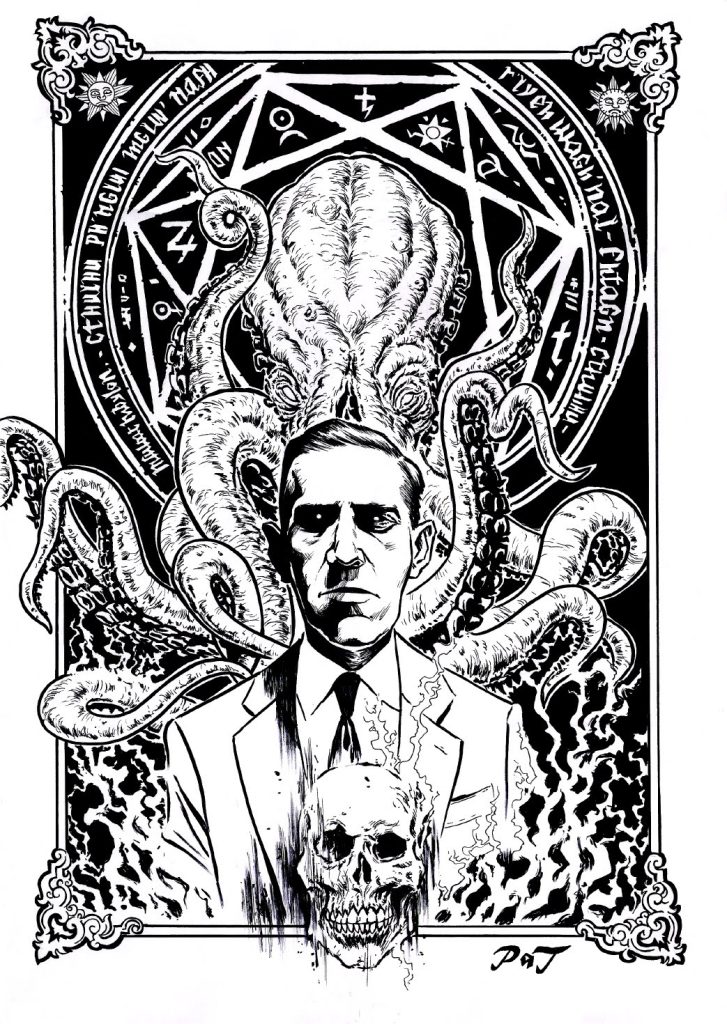
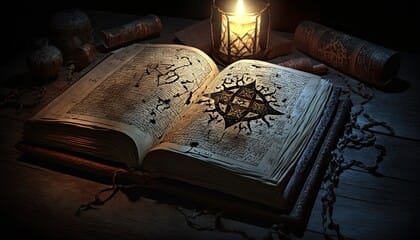
Famous works
Some of Lovecraft’s most famous works that contribute to the Cthulhu Mythos include:
1. “The Call of Cthulhu” (1928): This short story is perhaps Lovecraft’s most famous work, introducing the titular entity, Cthulhu, a colossal and ancient being that lies dormant beneath the ocean. The story unfolds through a series of fragmented narratives, revealing the horrifying reality of Cthulhu’s existence and the cults that worship it.
2. “At the Mountains of Madness” (1936): A novella that explores the discovery of an ancient, alien civilization in Antarctica. The narrative follows an expedition that uncovers the remnants of the Elder Things and their monstrous creations, ultimately revealing the terrifying truth about humanity’s origins.
3. “The Shadow over Innsmouth” (1936): This story delves into the eerie town of Innsmouth, where the protagonist uncovers a sinister pact between the townspeople and ancient sea creatures known as Deep Ones. The tale is notable for its atmosphere of creeping dread and the theme of transformation.
4. “The Dunwich Horror” (1929): A tale of rural horror set in the fictional town of Dunwich, Massachusetts. It follows the story of the Whateley family and their attempts to summon an ancient entity. The story is renowned for its depiction of eldritch abominations and its blending of occultism with science fiction.
5. “The Colour Out of Space” (1927): This story diverges slightly from the Cthulhu Mythos, focusing on the impact of an alien presence on a rural farm.The titular “colour” is an indescribable, otherworldly entity that brings devastation to everything it touches. It is a masterclass in cosmic horror, emphasizing the unknowable and uncontrollable aspects of the universe.
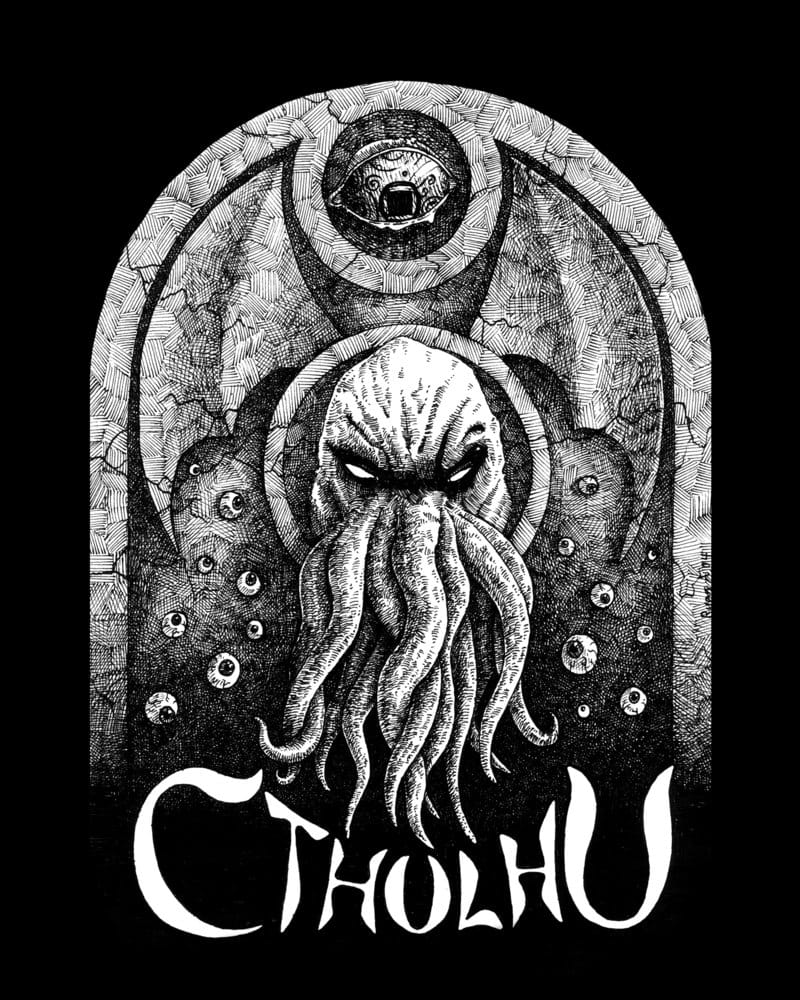
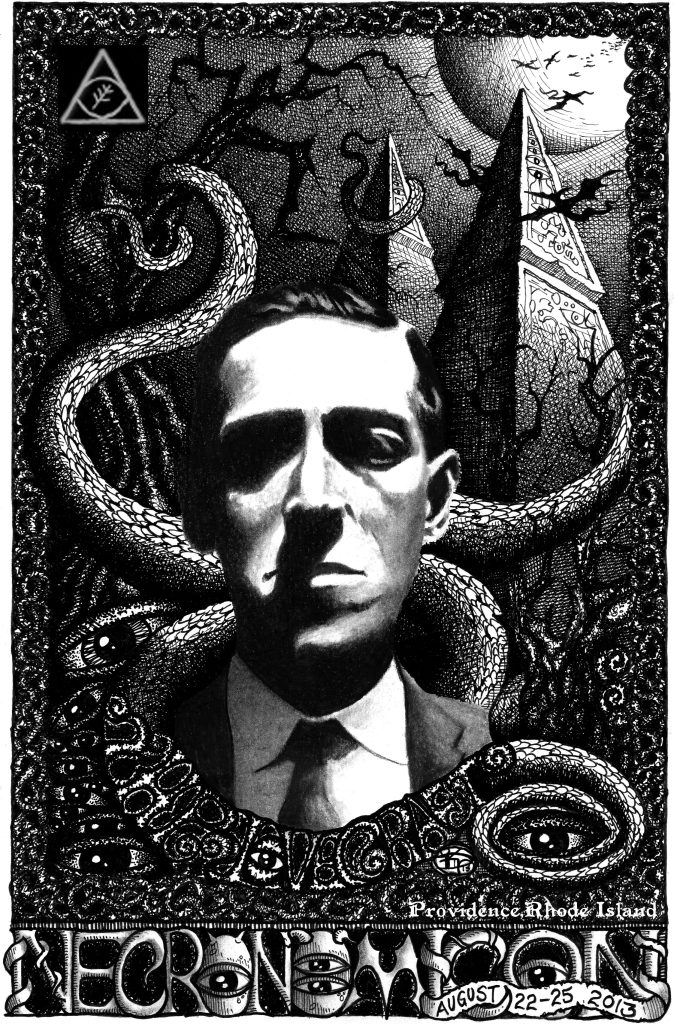
Cosmic Horror in movies and Literature
Directors like Guillermo del Toro and John Carpenter have cited Lovecraft as a major influence on their work. Films such as The Thing and In the Mouth of Madness borrow heavily from Lovecraftian themes of cosmic horror and the fragility of sanity. Additionally, Lovecraft’s mythos has inspired numerous adaptations and homages in popular culture, including the HBO series Lovecraft Country and the board game Arkham Horror.
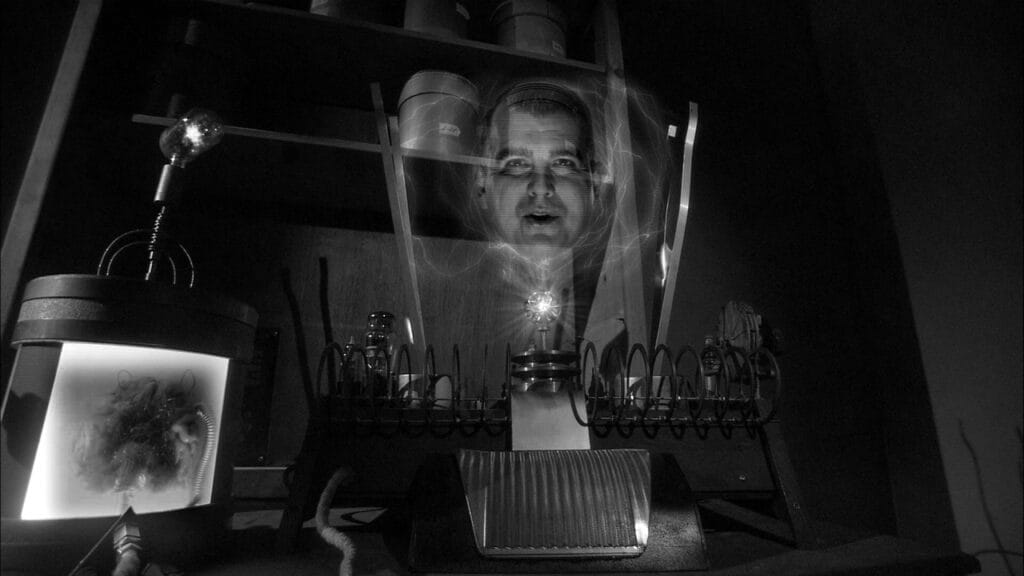
In literature, authors like Stephen King, Neil Gaiman, and Clive Barker have acknowledged Lovecraft’s profound impact on the horror genre. King’s The Mist and Gaiman’s American Gods reflect Lovecraftian elements, while Barker’s Hellraiser series delves into similar themes of otherworldly terror and existential dread.
His Legacy Today
H.P. Lovecraft’s legacy is one of profound complexity. As a master of cosmic horror, he created a mythos that continues to captivate and terrify readers and audiences worldwide. His works delve into the deepest fears of humanity, exploring the insignificance of human existence in an indifferent and often malevolent universe. While his personal beliefs and the explicit racism in some of his writings are deeply troubling, his literary contributions have had an undeniable and lasting impact on the horror genre.
Lovecraft’s ability to evoke dread and wonder through his vivid imagination and meticulous world-building has ensured that his stories endure. As we continue to explore and reinterpret his works, Lovecraft remains a towering figure in the landscape of weird fiction, a testament to the enduring power of storytelling and the human fascination with the unknown.
